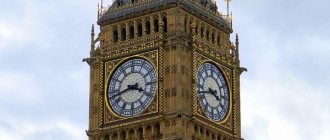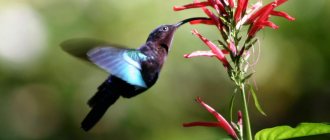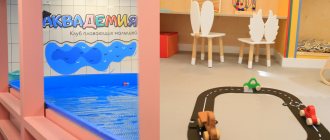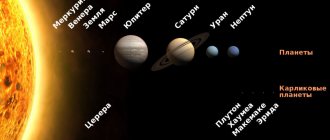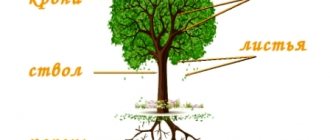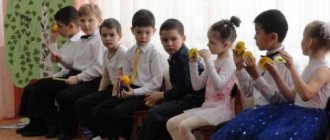Founding of the capital
Moscow is a huge, beautiful city with a special atmosphere, a unique past and centuries-old traditions. Every day a large number of people from different cities and countries come to it to study and work, as well as to see the sights.
Today Moscow is the capital of Russia. It was first mentioned in 1147 as the village of Moscow. According to ancient chronicles, Grand Duke Yuri Dolgoruky ordered the small settlement, which was located on a hill where two rivers - the Moscow River and Neglinka - merged, to be surrounded by a high wooden wall (city). He surrounded the wall with a deep ditch and nicknamed this place Moscow City.
The founding of the city had a positive effect on the inhabitants. It was very conveniently located, since major trade routes passed through it. This contributed to the further growth and development of Moscow.
By decision of Prince Ivan Kalita, Moscow became the capital of Rus' in 1328. By this time, the city's territory had become larger and the population had increased significantly.
Prince Dmitry Donskoy ordered the demolition of the old wooden walls and erected new ones made of white stone instead. From that moment on, Moscow began to be called White Stone.
Interesting things about Soviet Moscow
Looking at the Soviet period, you can learn some very interesting facts about Moscow:
- During the existence of the USSR, the city's territory increased more than 5 times.
- Moscow was proclaimed the capital of the Soviet Union in 1922.
- The famous soda from a machine in the capital cost only 1 kopeck, and if with the addition of syrup - 3. Despite the fact that there was an acute shortage in the country, the cups were never stolen, but were rinsed in the fountain and returned to their place.
- The construction of the Moscow metro began in the 30s, although the first projects arose even before the October Revolution. It should be noted that today almost every station has been renamed more than once. At the initial stage of the metro’s existence, there were stops with interesting names: “Kolkhoznaya” (now “Sukharevskaya”), “Mir” (now “Alekseevskaya”).
- New issues of newspapers were published twice a day, and they were immediately delivered to mailboxes. Information about all events could also be obtained from special street stands.
Cultural development of Moscow
Moscow had the status of capital until 1712, after which Peter I assigned it to St. Petersburg. It was returned only after 1917. But during this time Moscow continued to develop in all directions. Moscow State University (MSU) was opened with the direct participation of the great scientist M.V. Lomonosov. Two gymnasiums appeared - one for the children of the nobility, and the second for the children of commoners and merchants.
The War of 1812 brought great grief to the residents of Moscow, when the city was completely destroyed by fire. However, after the victory of the Russian army over Napoleon's army, it was restored. Thus, Moscow again became a cultural and economic center.
Today, part of the ancient city is located in the very center of the capital. It includes historical buildings, estates and other objects. On the territory of the Kremlin there are religious buildings that are known all over the world: the Arkhangelsk, Annunciation and Assumption Cathedrals.
There are more than 60 theaters, about 100 museums, 75 higher educational institutions, and galleries in the metropolis. More than 4,000 libraries operate for Muscovites and guests of the capital, including the famous “Leninka” (Lenin Library).
The Moscow transport system is unique, which includes railway stations, airports, public transport, and the metro. Some metro stations are architectural monuments. The metro continues to develop and opens new stations for passengers every year.
The Moscow government is doing everything possible to ensure a comfortable stay for Muscovites and guests of the capital. The infrastructure is developing and the city is becoming more modern and practical.
Interesting about modern times
What interesting facts about modern Moscow can you tell children?
- The modern business district "Moscow City" emerged only in the early 2000s.
- The Kremlin is the largest European fortress that has survived to this day.
- The Victory Monument is the tallest monument in the capital.
- In 1994, a law was introduced, which is still in force today, prohibiting dogs from barking between 11 pm and 7 am. If the owners do not take care of their pet, they are fined.
- Moscow is home to the largest number of billionaires in the world. New York is in second place for these indicators.
- The tallest television tower in Europe is Ostankino, located in the capital of Russia.
Attractions
Moscow is a huge city and it is impossible to see all the sights in one day. There are a large number of beautiful and significant places in the capital: ancient monuments, museums, parks and beautiful places:
- The main attraction of the capital is Red Square and the Kremlin. The territory of the Moscow Kremlin is surrounded by a high red brick wall and towers. On the largest tower, which is called Spasskaya, there is a clock. Inside there are churches, museums, monuments, as well as buildings where the Russian President and government work. Here is the Tsar Bell and the Tsar Cannon. They have this name because of their huge size.
- An equally significant attraction is the Alexander Garden. It is located next to the Kremlin. This is a very beautiful park, divided into 3 zones. The park has cozy alleys, beautiful lighting and benches for relaxation. Its construction began during the restoration of Moscow after the fire.
- VDNH is a huge exhibition complex. Every tourist who comes to Moscow visits it. There are museums, exhibitions, and various exhibition pavilions on the territory. Cultural and entertainment events are regularly held there. People come here to visit Europe's largest aquarium and center for the study of seas and oceans.
- The Ostankino TV tower has 45 floors. Excursions to it are conducted by experienced guides who tell interesting facts about the history of the creation of this attraction. Inside you can buy drinks and look at Moscow from above. Tourists from all over the world flock here every year.
- The history of the largest department store (GUM) began in the 18th century. At that time, shopping centers opened on Red Square on the site of modern GUM. In Soviet times, this store was considered the most important in the country. Today, famous world brands present their products in GUM.
- Arbat is the central city street. It is she who conveys the entire unique atmosphere of the city. People walk along it, street musicians play instruments and sing, and artists present their work to the public. Many famous people of our country once lived and worked here.
There are many observation platforms in the capital. You need to visit at least one to see Moscow from a bird's eye view. The most popular is Vorobyovy Gory. It is located next to Moscow State University. A visit to this site leaves an indelible impression of viewing the beauty of the city.
Interesting facts about Moscow during World War II
- In 1941, the Kremlin, like many other sights of the capital, was camouflaged. Already on the day war was declared, a Wehrmacht plane appeared over the city. The Germans managed to take many photographs and create an accurate map of the capital of the USSR. This led to an urgent need to change the Kremlin beyond recognition. Whole detachments of artists and architects, led by B. Iofan, were sent here. As a result, at the end of June the Kremlin looked like an ordinary residential area. The golden domes were hidden, the towers were repainted, and models of houses appeared on the square and slopes.
- An important event during the Second World War was the Battle of Moscow. Not only adults, but also schoolchildren need to know interesting facts about the course of military operations. More than 7 million people took part in this battle. This exceeds the number of people involved in the Berlin operation. It is also important to know that the blitzkrieg (the German plan for a rapid offensive and capture of the entire territory of the USSR) was thwarted precisely during the battle for Moscow.
Interesting facts about nature and art in Moscow
Parents, when telling interesting facts about Moscow to children, should not miss information about natural resources and cultural development in the city:
- The largest zoo in Russia is located in the capital. It was founded in the 19th century.
- In Moscow you can find a huge number of parks. The Alexander Garden is considered the oldest.
- The Russian State Library, located in Moscow, is second only to the Washington National Library of Congress in its collection of books.
- The oldest clock in the city is the Kremlin chimes.
- There are about five thousand museums in Moscow. But, unfortunately, they most often open their doors to guests of the capital, and not to local residents.
- The oldest city building that has survived to this day is the Assumption Cathedral.
A little about interesting people
Children will be interested to learn about famous people who were born or lived in Moscow:
- Aleksandrov A.V. is a famous composer. Born in Moscow. Known as the author of the USSR anthem.
- Akhmatova A. A. is a famous Russian poetess. She lived in Moscow since 1918. She was closely connected with this city, since her son was in one of the capital’s prisons.
- Bruce Y. V. is the most educated person in the country during the time of Peter I. He was the first to draw up an accurate map of the territory of the Russian Empire.
- Repin I.E. is a famous Russian painter. He moved to the capital at the age of 23.
These and many other people (among them are Paustovsky K. G., Ranevskaya F. G., Nekrasov N. A., Pasternak B. L., Mayakovsky V. V., Mendeleev D. I., Bulgakov M. A. ) created the history of the modern capital of Russia.
Project on the topic “My hometown is Moscow” for 2nd grade
Goal of the project: As part of studying the subject “The World Around You,” talk about your hometown, its attractions and memorable places.
Find information about his story and share it with your classmates. Tell schoolchildren about Moscow and why I love it. Prepare a report and presentation in the form of a photo story. Project plan:
- Location on the country map.
- History and symbols.
- Moscow in the present.
- Attractions.
- Places of military glory.
- Conclusion.
- An example of a finished photo story-presentation.
